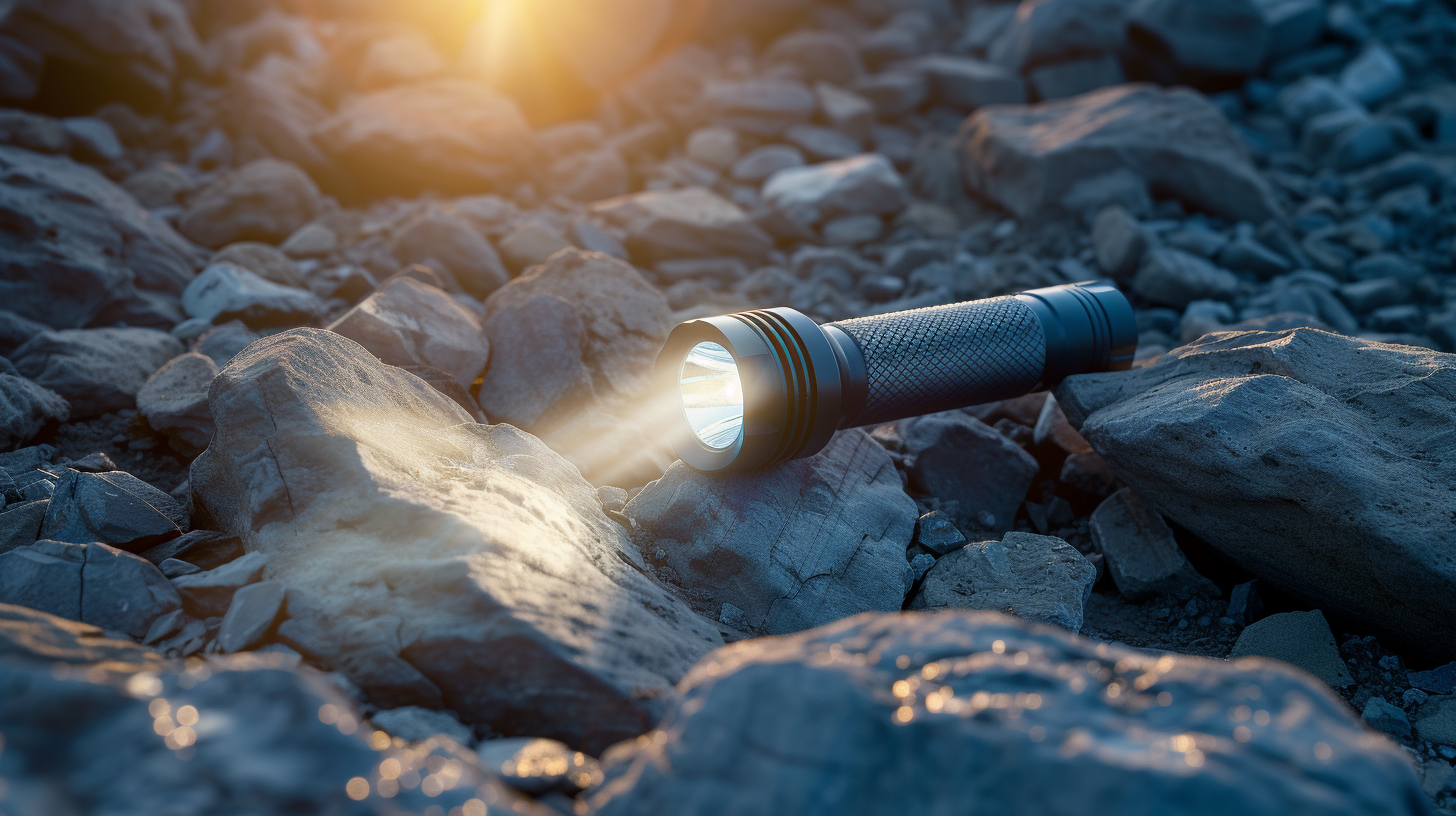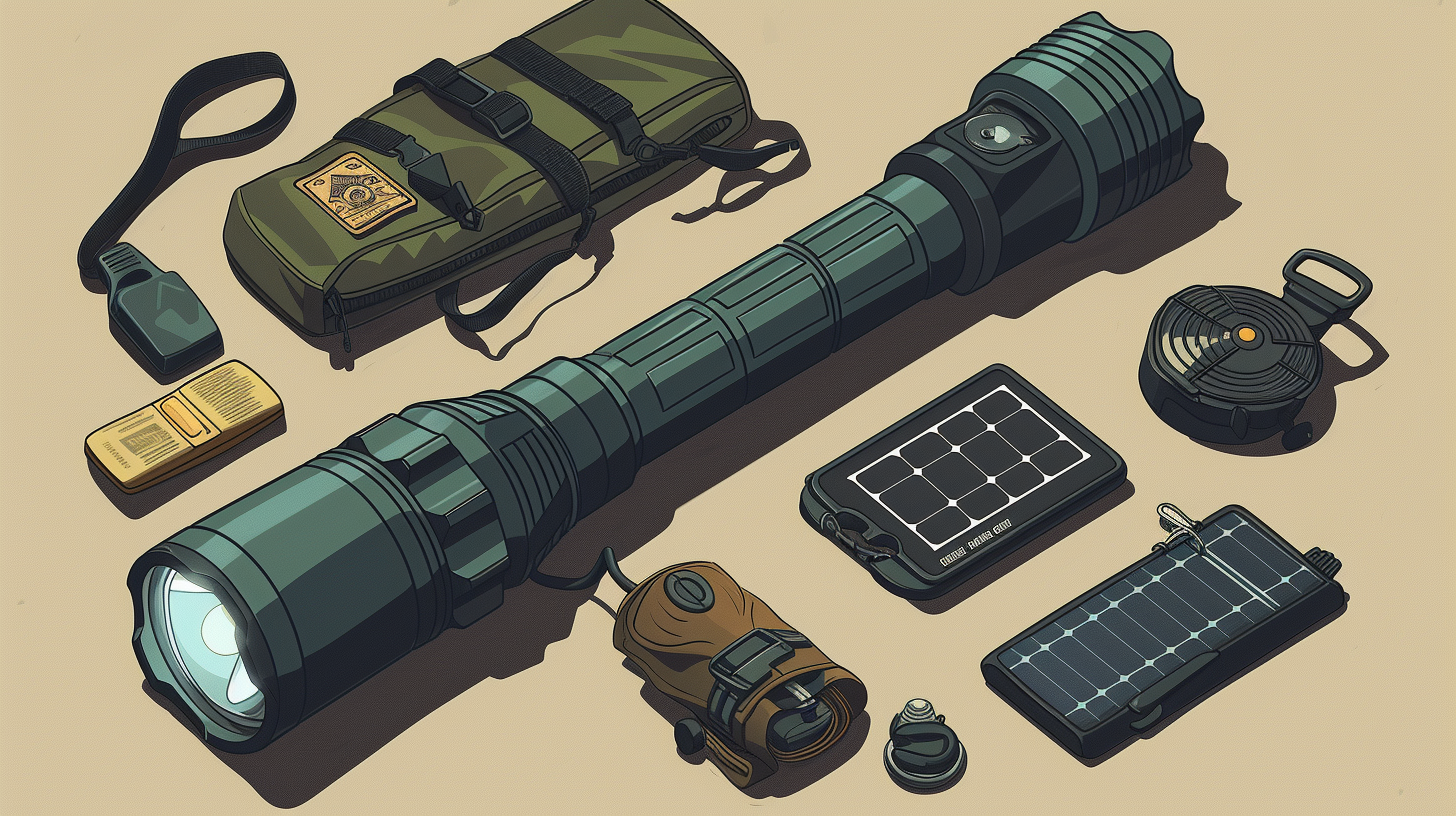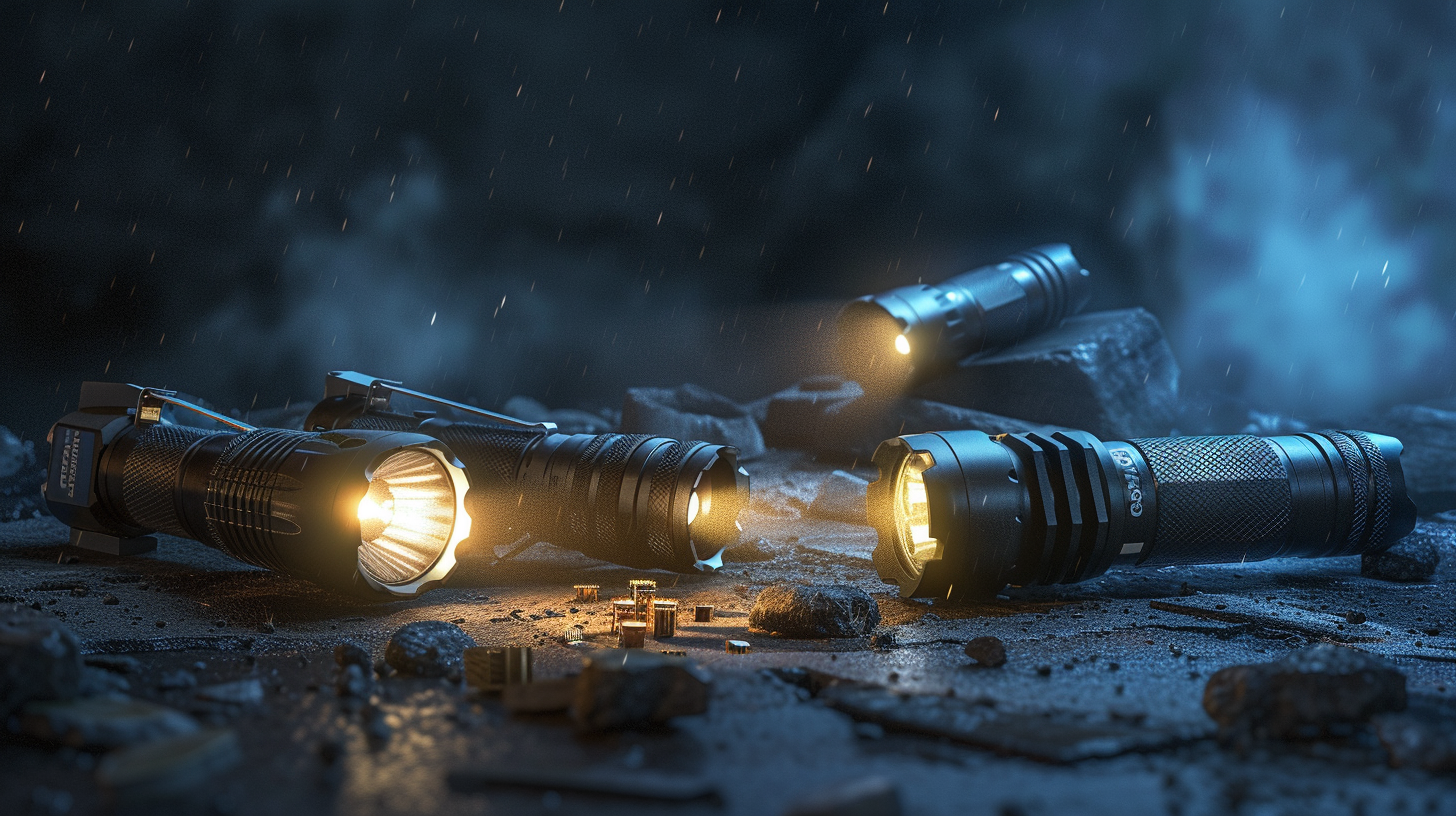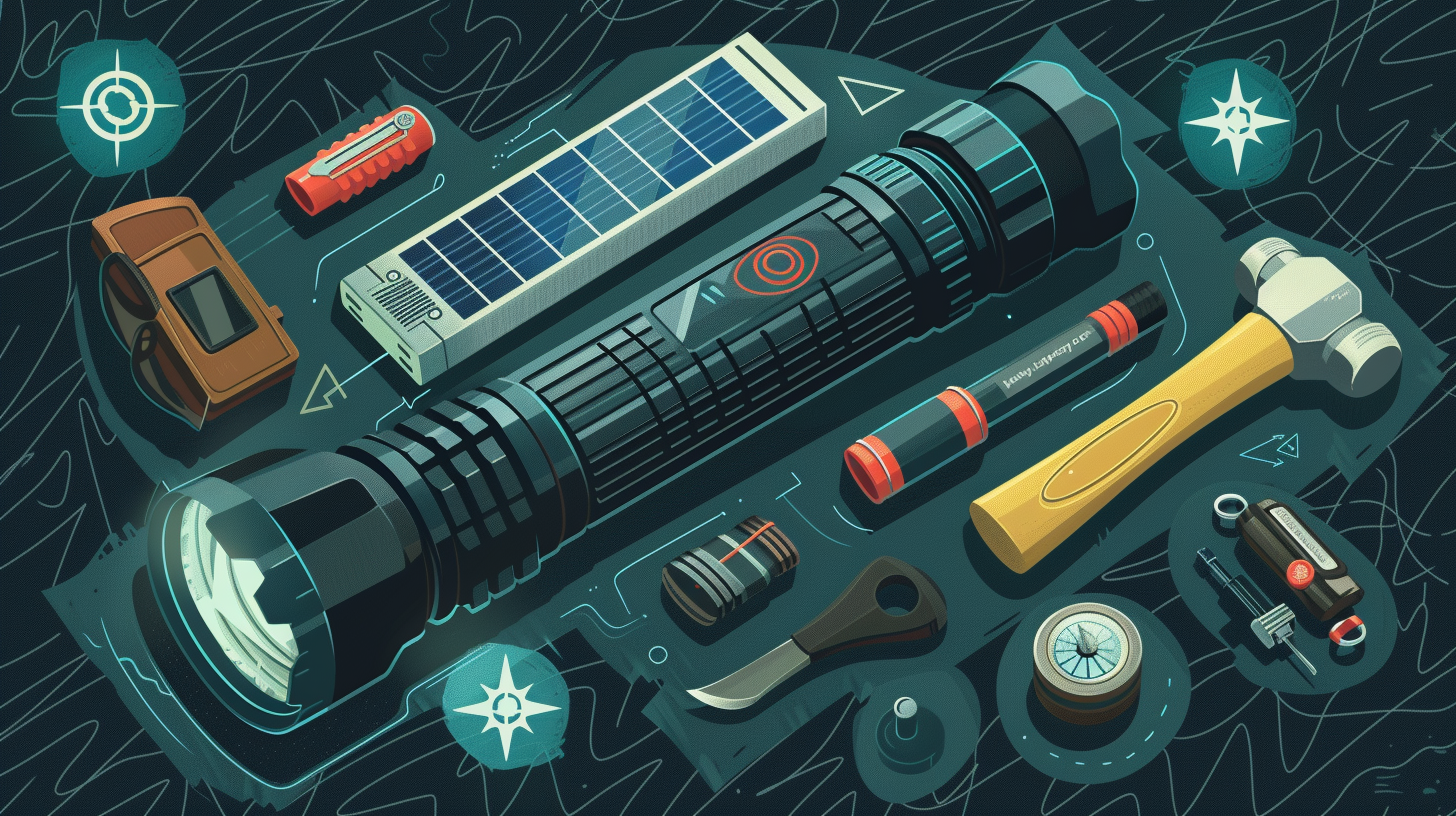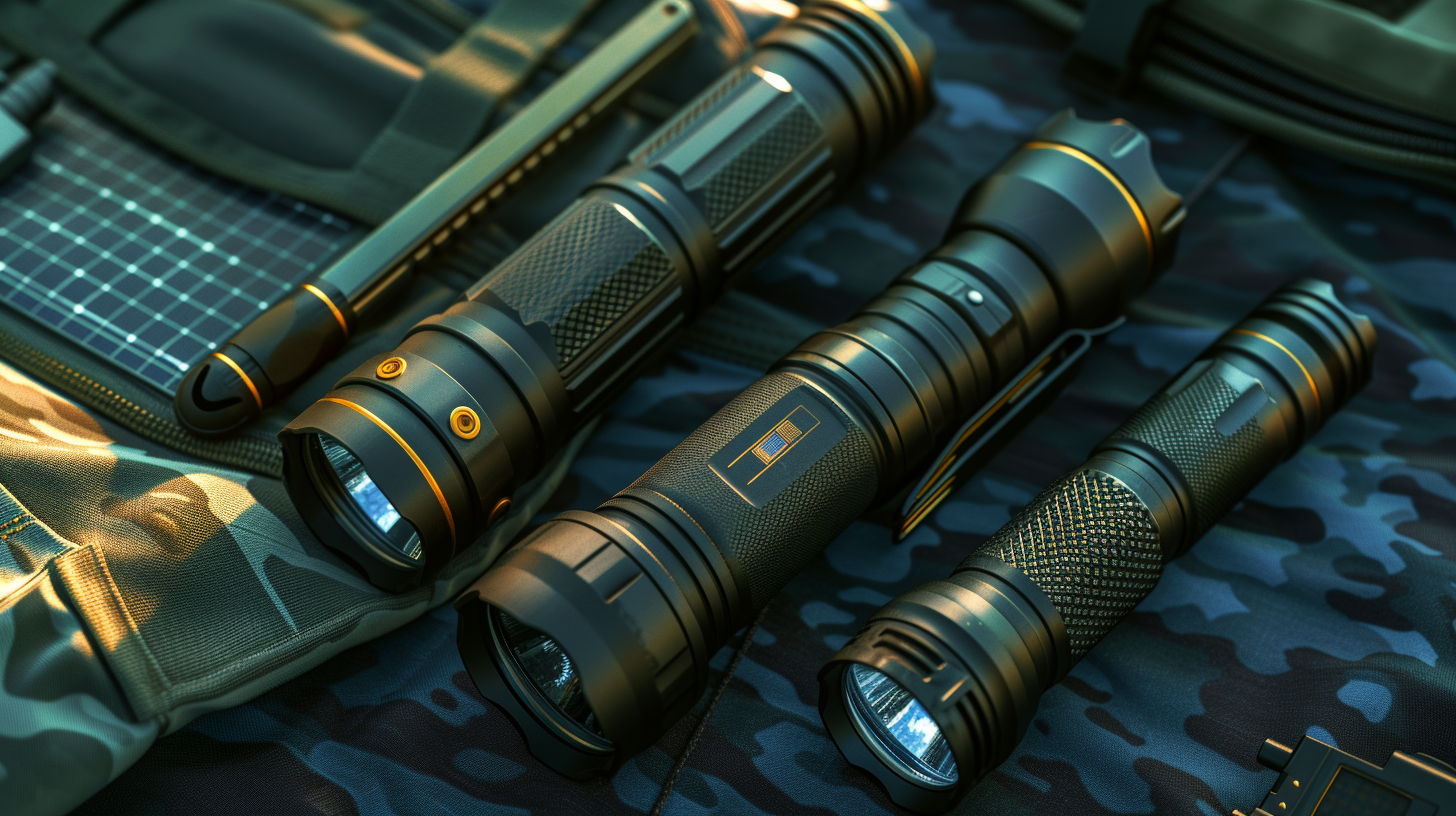Did you know that over 70% of urban households are unprepared for natural disasters, with inadequate or no emergency lighting solutions at all?
In the wake of an earthquake, when power outages are common, the flashlight in your survival kit isn’t just a tool—it’s your lifeline. You’ll want something that’s not only compact and durable but also has a battery life that won’t leave you in the dark when you need it most.
LED flashlights are often touted for their efficiency and brightness, but there’s more to consider, like beam shape, battery type, and extra features that could make all the difference in a crisis situation.
As we explore the top contenders for the best flashlight for earthquake survival kits, you’ll discover essential tips for choosing a model that meets your specific needs, ensuring you’re as prepared as possible for the unexpected.
Key Takeaways
- An essential feature of an earthquake survival flashlight is a minimum of 200 lumen LED output.
- Flashlights with adjustable beam shape, multiple modes, and adjustable zoom are recommended for earthquake survival kits.
- Brightness adjustability is important for tailoring the output to different tasks and conserving battery life.
- It is crucial to consider battery life and choose flashlights compatible with multiple battery types, such as lithium or rechargeable batteries, and always have spare batteries on hand.
Essential Flashlight Features
When preparing your earthquake survival kit, it’s crucial to choose a flashlight equipped with features that ensure durability, efficiency, and versatility in emergency situations. An LED flashlight stands out as your best pick due to its robustness, bright illumination, and energy-saving capabilities.
You’ll want a flashlight that offers a minimum of 200 lumen LED output, bright enough to navigate the darkest paths or rummage through supplies.
Consider the beam’s shape; a flashlight that allows you to switch between a narrow focus and a wider floodlight can adapt to various scenarios, enhancing its utility.
Rechargeable batteries are a game-changer, offering convenience and a long shelf life, ensuring your flashlight is ready when you need it most. However, having a heavy-duty flashlight that can accommodate disposable batteries, like AA or AAA, ensures you’re never left in the dark, even if recharging isn’t an option.
Flashlights with multiple modes, including adjustable zoom, low and high beams, and signaling features, cater to diverse needs during emergencies. These functionalities not only save battery life but also make your flashlight a versatile tool in your survival kit, ready for any situation.
Top Flashlight Recommendations
Having outlined the essential features of an ideal earthquake survival flashlight, let’s now explore the top recommendations that meet these criteria. When selecting a flashlight for your emergency kit, the type of batteries it uses is crucial. AA or AAA batteries are preferable due to their availability and longevity.
For your survival flashlights, consider LED flashlights for their durability and energy efficiency. They can withstand the rough conditions often encountered during and after an earthquake. Here are three top picks that should be in every emergency kit:
- The High-Power LED Flashlight: This type of flashlight offers bright illumination, perfect for navigating through dark and potentially hazardous environments. Look for models that support both AA and AAA batteries.
- The Compact Tactical Flashlight: Ideal for keeping on your person or in a smaller emergency kit. Despite its size, it provides sufficient light and is sturdy enough for survival situations.
- The Hand-Cranked LED Lantern: While not a flashlight per se, this lantern is invaluable for providing ambient light in a shelter or while on the move. It eliminates the worry about batteries altogether.
Understanding Brightness Levels
When selecting a flashlight for your earthquake survival kit, you’ll want to understand the difference between lumens and candela, as they both play crucial roles in brightness.
It’s also important to look for flashlights with brightness adjustability, giving you the flexibility to adapt to various situations.
Lumens VS Candela
To effectively navigate the complexities of choosing a flashlight for your earthquake survival kit, it’s crucial to understand the difference between lumens and candela, as they dictate overall brightness and beam intensity, respectively.
When you’re picking an LED emergency flashlight, powered by AA or AAA batteries, remember:
- Lumens measure total light output – ideal for wide-area lighting.
- Candela measures beam intensity – perfect for focusing on distant objects.
- A balance between lumens and candela ensures versatility in various emergency scenarios.
Considering lumens vs candela helps you select a flashlight that not only illuminates a broad area but also provides the focused intensity needed for long-distance visibility. This balance is key in ensuring your flashlight can handle different aspects of an emergency efficiently.
Brightness Adjustability Importance
Adjustable brightness in your flashlight is crucial, ensuring you’ve got the right light for any situation during an emergency. Whether you’re navigating through debris with an LED lantern or signaling for help, understanding brightness levels can make all the difference. Here’s why the brightness adjustability importance can’t be overstated:
| Situation | Brightness Level |
|---|---|
| Navigating debris | High |
| Reading or close tasks | Low |
| Signaling for help | Strobe |
| Conserving battery | Variable |
High lumens are essential for tactical scenarios, while lower settings help conserve power in your flashlight, especially if it’s powered by lithium batteries. Tailoring output to the task not only conserves energy but ensures you’re not left in the dark during prolonged emergencies.
Battery Life Considerations
Selecting the right batteries for your emergency flashlight is critical, with options like lithium and rechargeable NiMH or Lithium-Ion offering the best performance and reliability. Lithium batteries, in particular, stand out for their long shelf life and suitability across various temperature ranges, making them ideal for your earthquake survival kit. Unlike alkaline batteries, which are prone to leakage if left inside a flashlight for too long, lithium and rechargeable batteries ensure your flashlight is ready when you need it most.
When planning your emergency supplies, consider these key points:
- Choose Flashlights Compatible with Multiple Battery Types: This increases your chances of finding suitable replacements during emergencies.
- Avoid Alkaline Batteries for Long-Term Storage: Their tendency to leak could damage your flashlight, potentially leaving you in the dark.
- Always Have Spare Batteries: Regardless of whether you opt for AA, AAA, or Lithium-Ion batteries, having extras on hand is crucial, especially given the limited availability of specific types during disasters.
Remember to check and replace batteries periodically to ensure your flashlight remains operational when it counts. Opting for batteries with a long shelf life minimizes the need for frequent checks and replacements.
Durability and Reliability
After ensuring your flashlight is powered by the best batteries, it’s crucial to consider its durability and reliability to withstand the harsh conditions of an earthquake. You don’t want your survival kit to fall short when you need it most. That’s why opting for flashlights made with high-quality materials and construction is non-negotiable. They’re your beacon in the dark, your guide through the chaos.
Look for flashlights boasting water-resistant or waterproof features. Earthquakes can lead to unexpected water exposure, and you’ll need emergency lights that can handle it. Similarly, an impact-resistant design is paramount. It’s all too easy for items to get dropped or knocked around when you’re scrambling for safety or navigating through debris. Your flashlight should be tough enough to take a hit and keep on shining.
Don’t just take a brand’s word for it, though. Prioritize flashlights known for their durability and reliability, backed by a slew of positive customer reviews and high ratings. These testimonials are your assurance that, when the ground shakes, your power source won’t just flicker out. It’s about having peace of mind, knowing your light will last through the night and beyond, no matter what.
Additional Useful Functions
Beyond the basic lighting function, you’ll want to consider flashlights that offer more to ensure your safety and convenience in emergencies.
Features like solar charging capability keep your light powered without reliance on traditional batteries, while emergency signal features can be lifesavers when you need to attract attention.
Additionally, opting for a waterproof design ensures your flashlight withstands harsh weather conditions, making it a reliable tool in your earthquake survival kit.
Solar Charging Capability
Considering the unpredictable nature of power availability following an earthquake, flashlights with solar charging capabilities offer a reliable and sustainable light source. These flashlights not only harness sunlight through built-in solar panels, making them an environmentally friendly option, but they also come packed with features that can be crucial in an emergency.
When adding a solar-charged flashlight to your emergency kits, keep in mind:
- Long shelf-life: Solar panels ensure your flashlight remains usable over extended periods.
- Versatility: Multiple lighting modes cater to different needs, from navigating debris to signaling for help.
- Additional utility: USB outputs allow charging of other devices, vital in keeping communication lines open.
Incorporating a solar-powered flashlight into your emergency plan enhances your preparedness, ensuring you’re not left in the dark when traditional power sources fail.
Emergency Signal Features
Flashlights equipped with emergency signal features can significantly enhance your safety during a crisis. Imagine you’re in a situation where visibility is low or you need to signal for help without making a sound.
Flashlights with SOS strobe modes or a beacon function are invaluable. They can catch the attention of rescuers from afar. Some models even include a red light mode to preserve your night vision and signal discreetly.
Additionally, features like a built-in whistle or loud siren can make a huge difference in being heard during emergencies. And don’t overlook practicalities; flashlights with a magnetized base or clip offer hands-free use, crucial when you need to signal for help while managing other survival tasks.
Always consider these emergency signal features when selecting AA or AAA flashlights for your survival kit.
Waterproof Design Essentials
When selecting a flashlight for your earthquake survival kit, it’s essential to prioritize models with a waterproof design to ensure functionality in all conditions. Beyond the basics of waterproofing, consider these waterproof design essentials for the best emergency readiness:
- Prevent Rolling: A flashlight that stays put when placed on a flat surface, avoiding unnecessary searching during an emergency.
- Durability and Water Resistance: Ensure the flashlight’s case is robust enough for your needs, whether it’s for an emergency candle during a blackout or the rugged outdoors.
- Ease of Use Features: Look for a wrist strap or a specially designed grip, alongside adjustable beams for versatility, making the Fenix E series a solid choice for your kit.
Maintenance and Care Tips
To ensure your flashlight is ready when disaster strikes, it’s crucial to regularly check its condition and the batteries’ power. Doing this on a regular basis helps you avoid being caught in the dark during critical moments. Make sure to also keep spare batteries handy, as emergencies can last longer than you anticipate.
Storing batteries outside the flashlight or slightly unscrewing the tailcap can prevent unwanted electrical connections that might drain your batteries. For those looking to be more sustainable and cost-effective, consider a battery charger that works with 12V or a USB charger. This won’t break the bank and ensures you’re always prepared. Remember to discharge and recharge the batteries in your emergency kit at least once a year to maintain their shelf life.
| Maintenance Task | Benefit | Emotion Evoked |
|---|---|---|
| Regular checks | Ensures readiness | Confidence |
| Spare batteries on hand | Preparedness for longevity | Security |
| Store batteries properly | Prevents power drain | Relief |
| Annual recharge/discharge | Maintains battery shelf life | Peace of mind |
Adopting these hands-free maintenance tips ensures your flashlight won’t let you down when you need it most.
Choosing the Right Model
Selecting the right flashlight model is crucial, as different features cater to varied needs in earthquake survival situations. When the emergency lasts longer than expected, having a reliable flashlight can make a significant difference in your safety and comfort. Here are key factors to consider:
- Beam Shape: Decide if you need a narrow focused beam for long-distance visibility or a wider floodlight to illuminate large areas. This choice can help you navigate debris or signal for help more effectively.
- Power Source: Options vary from traditional batteries to crank or solar-powered models. Consider:
- Batteries are easier to find but may not last as long.
- Crank and solar-powered flashlights ensure you have light as long as the emergency lasts, even when batteries are scarce.
- Durability and Water Resistance: Your flashlight should withstand rough conditions. Look for a sturdy, water-resistant case to ensure it survives with you through the quake.
Ensure the flashlight is plenty bright and has features like a wrist strap or non-rolling design for ease of use. Some models even include an Emergency Radio, adding value over time.
Conclusion
In wrapping up, you’ve got to pick a flashlight that’s tough, energy-efficient, and fits snugly in your earthquake survival kit. LED models top the list for their brightness and long battery life.
Don’t overlook features like adjustable zoom and a sturdy wrist strap for added convenience.
Remember, the right flashlight can make a huge difference during emergencies. So, take your time, compare options, and choose one that ensures you’re prepared for the unexpected.
Stay safe and stay illuminated.

